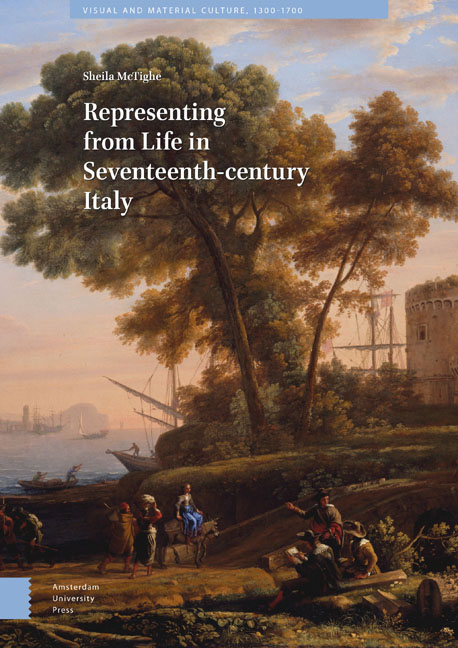Book contents
- Frontmatter
- Acknowledgements
- Contents
- Illustration List
- Introduction: Depicting from Life
- 1 Caravaggio’s Physiognomy
- 2 Jacques Callot, Drawing Dal Vivo around 1620: Commerce in Florence, Piracy on the High Seas
- 3 Jacques Callot’s Capricci di varie figure (1617): The Allusive Imagery of the Everyday, Represented ‘from Life’ and Emulating a Text
- 4 The Motif of the Shooting Man, and Capturing the Urban Scene: Claude Lorrain and the Bamboccianti
- 5 The Absent Eyewitness: the Revolt of Masaniello and Depiction Dal Vivo in the Middle of the Seventeenth Century
- Conclusion
- Index
1 - Caravaggio’s Physiognomy
Published online by Cambridge University Press: 21 November 2020
- Frontmatter
- Acknowledgements
- Contents
- Illustration List
- Introduction: Depicting from Life
- 1 Caravaggio’s Physiognomy
- 2 Jacques Callot, Drawing Dal Vivo around 1620: Commerce in Florence, Piracy on the High Seas
- 3 Jacques Callot’s Capricci di varie figure (1617): The Allusive Imagery of the Everyday, Represented ‘from Life’ and Emulating a Text
- 4 The Motif of the Shooting Man, and Capturing the Urban Scene: Claude Lorrain and the Bamboccianti
- 5 The Absent Eyewitness: the Revolt of Masaniello and Depiction Dal Vivo in the Middle of the Seventeenth Century
- Conclusion
- Index
Summary
Abstract
His biographer Giovan Pietro Bellori stressed Caravaggio's reliance on painting directly from the posed model, saying that when Caravaggio's eyes left the model his mind went empty. Using studies of his painting technique that allow us to look beneath the surface of his paintings, we can see some of the paradoxes of his realism. His reliance on contemporary studies of physiognomy, comparing animal and human faces, helps us understand why he chose certain models and then repeated their features from one painting to another. Yet he also changed his models’ features from the underpainting to the finished work. The upper surface belies the unseen depths of the painting, just as human identity is not always apparent in individuals’ physiognomy.
Keywords: underneaths of painting, Giovanni Battista della Porta, Italian still life, music in painting, models in art
Casting over his works a look at once that of a stranger and a father, [Balzac] suddenly decided, shining a retrospective light upon them, that they would be more beautiful brought together in one cycle where the characters would return again and again, and thus he added to his work under this conjecture the last and the most sublime brushstroke.
—Marcel Proust, In Pursuit of Lost TimeThe models who posed in Caravaggio's workshop were central to his art. His figures painted dal vivo, from life, retain the individualized appearance of their models, even when they were meant to represent Biblical or mythological figures. The writings of churchmen had advised against representing saints in the form of recognizable real people. Renaissance artists before Caravaggio drew from models in the early stages of preparing a painting, but in their finished work the models were transformed. North Italian artists in particular had bypassed preparatory drawings to paint directly from posed models. Their fictional protagonists did not often retain the look of real individuals, however. By contrast, Lombard portraitists like Giovanni Battista Moroni in the mid-sixteenth century also sometimes painted their sitters dal naturale, composing their likeness in pigment directly on the canvas, and achieving extremely detailed likenesses.
- Type
- Chapter
- Information
- Representing from Life in Seventeenth-century Italy , pp. 41 - 90Publisher: Amsterdam University PressPrint publication year: 2020



